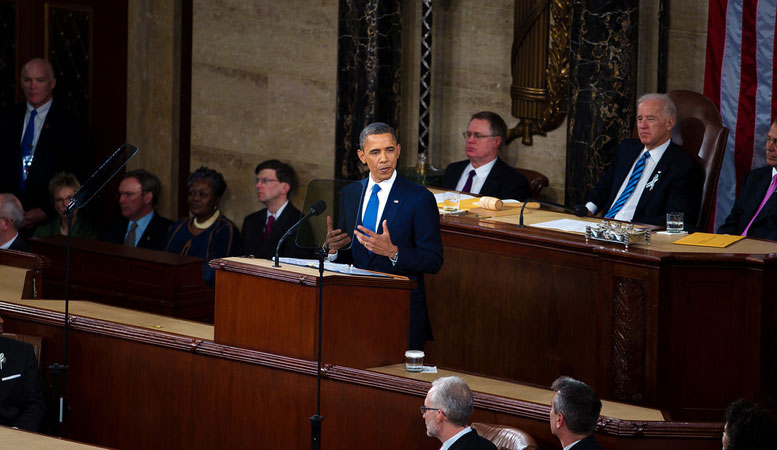In his State of the Union address earlier this week, President Obama promised a new age of internet access for Americans. He said “Within the next five years, we’ll make it possible for businesses to deploy the next generation of high-speed wireless coverage to 98 percent of all Americans.”
But it’s unclear how Obama plans to make good on that promise.
For us to “out-innovate, out-educate and out-build the rest of the world,” it’s clearly going to take planning — planning that the White House and Federal Communications Commission aren’t ready to talk openly about yet, if its even been done.
The White House did not respond to TPM’s requests for comment, but a senior FCC official responded via email:
“The White House has proposed a National Wireless Initiative that will help unleash new spectrum through incentive auctions, expand next generation wireless broadband coverage across the country, and implement and pay for a nationwide interoperable public safety network. We share these goals and, like the President, believe they are essential to our global competitiveness, economic growth, and innovation. We look forward to working with Congress and the Administration in the months ahead on the specifics.”
Art Brodsky, communications director for Public Knowledge (a digital culture public interest group), said that just acknowledging the growing need for broadband access was a huge step forward for Obama.
“What’s new is that he said it at all,” said Brodsky. “It was interesting, he did mention wireless, he did mention broadband, Google, Facebook, now he’s got the wireless spectrum going and shout-outs to a broadband economy, which is all good. The only question is, how are you going to do it?”
But national initiatives for broadband access aren’t a revelation: The American Recovery and Reinvestment Act of 2009 allotted $7.2 billion for broadband deployment in rural areas, and in March 2010, the FCC released the National Broadband Plan, which called for the government to increase its spectrum inventory tenfold, from 50 mHz to 500.
Rep. Ed Markey (D-Mass.), pointed to the FCC’s Broadband Plan as the way forward after the State of the Union, but there has been no confirmation of whether that will be the blueprint for the National Wireless Initiative.
Of course, without a specific plan, there’s no way to estimate the cost to implement the president’s promises — a rather large stumbling block in the GOP-controlled House. Parul P. Desai, policy counsel for Consumers Union, said that the $7.2 billion in ARRA money has already been allocated, so it’s unclear where funding for the new initiative would come from.
The FCC has thus far failed to assert and clearly define its domain over broadband, with gaps that are already beginning to show in the battle for net neutrality. Before making significant progress on increasing broadband availability, Brodsky predicted that the FCC would have to make a move to assert its authority, perhaps through the new first responders broadband network, be challenged in court, and wait for a resolution that would clarify their authority.
Technology commentator Arik Hesseldahl predicted that it will be a push-pull between the FCC and Congress that will delay progress.
CU’s Desai pointed out that big wireless carriers are pushing back on FCC even over relatively small matters like a requirement that carriers notify customers if they’re about to go over their data limits, preventing so-called bill shock.
“Even basic protections or overages, anything just related to broadband Internet access, would be called into question,” Desai said, if the bill shock rule is quashed or if the courts overturn net neutrality.
According to the UN’s International Telecommunication Union, 239,893,600 Americans used the Internet in 2010, 77.3 percent of the population. However, most of that is coming out of well-served urban areas, not rural regions.
Data from digital research group comScore shows that broadband growth in rural areas is catching up to the growth rate of urban areas — but Brodsky is quick to point out that growth is different than saturation and quality of connection, areas in which rural regions are far behind.
“It’s steadily growing, yeah, but it depends on your carrier and what you’re investing in,” he said. “It’s nowhere near close to replacing landlines yet.”






